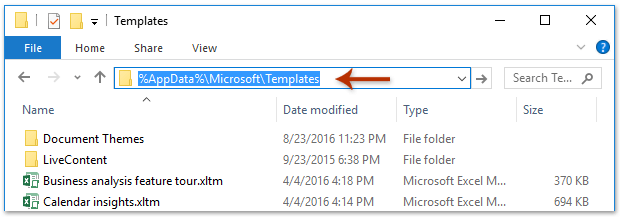

Enter the file path in file text box or browse the file which you.
How to create an oft file Offline#
Click the Advanced tab and click the Offline Folder File. Outlook, an email and organization app thats part of Microsofts Office productivity suite, uses these files to save style templates for custom emails. Click the Account Settings button and Double-click the Microsoft Exchange to open more settings.
How to create an oft file code#
The style attribute in the following code sample changes the paragraph’s text to red. Open Outlook and click the top Filemenu and then click the Info tab. You’ll also need to surround the code with quotation marks.Īdd CSS styling to messages by including inline style attributes in your HTML code. All your code must reside on one line before you paste it into the VBA editor, as seen in the previous example. Paste it into a new text document and remove all line breaks from the code. If you have an HTML document you’d like to use as an Outlook message, copy the code that exists in the document’s body section. You’ll probably want to create more compelling messages by using your own HTML. This example uses a simple HTML code block. I found a solution for Outlook 2003(see below) but we are having problems with the oft file in Outlook 2007.Outlook 2003 fix:If you have upgraded the. When the message arrives, open it and verify that the HTML that you added to the SUB is in the message’s body. A good way to test everything is to send the message to yourself. In each of these cases, to locate your custom form, select the appropriate location in the Look In drop-down list of the Choose Form dialog box, shown in Figure 27-16.After running your Sub, you can type a recipient’s email address in the “To” text box and click “Send’ if you want to send the message. Alternatively, if you want to use a form that you have saved to a folder on your local hard disk, you would store it using the User Templates In File System location. If you have a custom form intended for your own use, however, you would store it in the Personal Forms Library. Custom forms intended for common use, for example, are usually stored in an accessible network location. Custom forms are normally stored in a location related to their expected use. Choosing formsĪfter you have created a custom form and saved or published it for common use, you will need to select the form to use it. Only people designing and testing forms for your organization should have access to this folder.Īfter you publish a form, the folder in which you publish it contains the form itself and all the underlying information that another person’s instance of Outlook 2013 needs to understand the form. When you complete a form design, publish your form in this staging folder at regular intervals so that you don’t lose the modifications you’ve made to the form. Create a staging folder where you publish the forms that you’re working on. When you’re creating a form, it’s a good idea to keep the production version of the form separate from the development version. (The default is the Personal Forms Library.)Ĭlick Publish in the Publish Form As dialog box to save the form in the selected location. In the Look In drop-down list, select the folder or forms library where you want to publish the form. (The first time you use the Publish button, the Publish Form As dialog box will be displayed, but after a form has been saved once, the Publish button will simply save the existing form, overwriting the previous version.) In the Form group, click Publish, and then click Publish Form As to open the Publish Form As dialog box. Select the form that you want to publish, and then click Open. In the Design Form dialog box, select the location (such as User Templates In File System) containing the form that you want to publish.

You can publish it to your Inbox or another folder in your mailbox, a public folder, the Organizational Forms Library (with Microsoft Exchange Server), or your Personal Forms Library.įollow these steps to publish a form to a folder or forms library:Ĭlick Design A Form on the Developer tab. When you finish your form, you can publish it to a specific folder location. Publishing a form is a lot like saving the form. The form file is saved as an Outlook Template file (.oft). In the Save As dialog box, enter the file name and select the location.


You can save a form by clicking File and then clicking Save As. Publish the form to a folder or other location. First, however, you’ll need to preserve your form in one of these two ways: After you create your form and define its behaviors, properties, and settings, you’ll want to make it available to users.


 0 kommentar(er)
0 kommentar(er)
